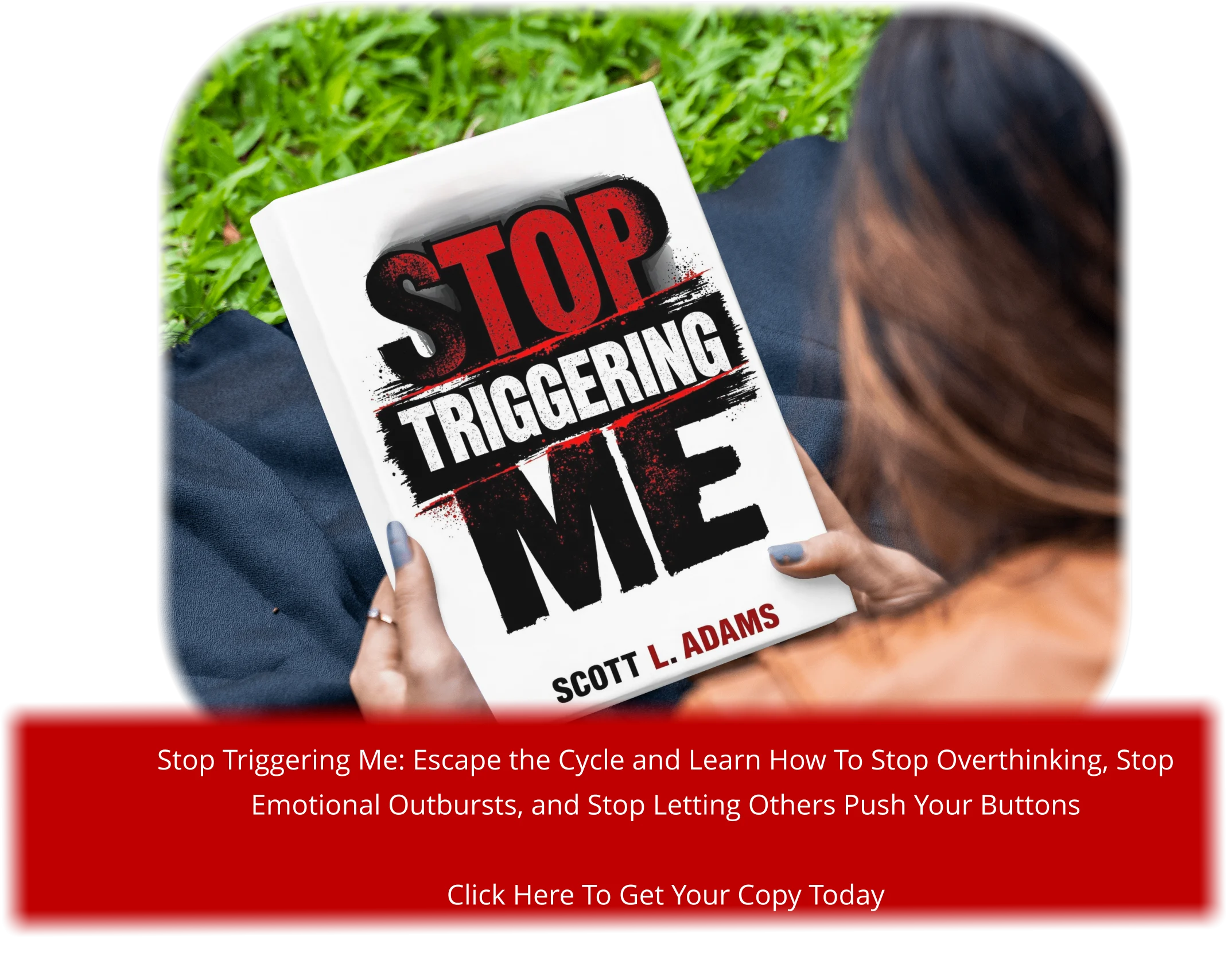I used to be the person who analyzed every decision, big or small. From choosing what to eat for breakfast to planning my career moves, my mind was always racing. It felt like I was stuck in a loop, constantly second-guessing myself. Overthinking wasn’t just exhausting—it was holding me back from living fully.
One day, I realized that my overthinking was more than just a habit. It was a barrier to my potential. Studies show that 63% of individuals identify overthinking as a challenge to achieving their goals1. That realization was my turning point. I decided to take control of my mind and focus on practical ways to break free.
This journey taught me that change doesn’t happen overnight. It’s a process that requires time, effort, and a clear purpose. By setting small, actionable goals, I began to see progress. Research indicates that 75% of people who set specific goals report higher satisfaction in their lives1.
If you’re someone who overthinks, know this: you’re not alone. This article will guide you through understanding overthinking, calming your mind, and setting meaningful goals. Together, we’ll take the first step toward a healthier, more focused life.
Key Takeaways
- Overthinking can limit your potential and hinder personal growth.
- Setting specific goals increases satisfaction and progress.
- Change is a process that requires time, effort, and focus.
- Small, daily efforts can lead to lasting improvements.
- Understanding overthinking is the first step toward a healthier mind.
Understanding the Overthinking Trap
Overthinking often feels like being stuck in a maze with no exit. It’s a mental trap that keeps you circling the same thoughts, unable to move forward. For many, it’s rooted in deep habits or past experiences that shape how we approach decisions. Understanding this is the first step toward breaking free.
Analyzing the Roots of Overthinking
Overthinking doesn’t happen overnight. It’s often tied to fear of failure, perfectionism, or past mistakes. For example, someone who’s been criticized heavily might overanalyze every choice to avoid judgment. This can lead to a cycle of self-doubt and hesitation2.
Research shows that overthinking is linked to increased anxiety and depression, creating a loop of negative thoughts3. Recognizing these patterns is crucial. It’s not just about stopping the thoughts—it’s about understanding why they happen.
How Overanalysis Affects Your Life
Overthinking can drain your energy and keep you from reaching your full potential. It’s like spinning your wheels without moving forward. For instance, someone stuck on a single goal might spend so much time planning that they never take action2.
This habit can also harm relationships and health. Constantly second-guessing yourself can lead to misunderstandings with others. It can even disrupt sleep, leaving you exhausted and unfocused3.
But here’s the good news: understanding the roots of overthinking is a powerful change. It’s the first part of turning endless thoughts into actionable steps. By learning about your tendencies, you set the stage for a more productive process.
Self-improvement strategies to Calm Your Mind
Calming the mind doesn’t have to be complicated—it starts with small, intentional steps. When I first began my journey to quiet my overthinking, I felt overwhelmed. But I quickly learned that even a few minutes of focus each day can make a big difference. Here are some techniques that helped me and can help you too.
Mindfulness and Meditation Techniques
Mindfulness became my go-to tool for breaking the cycle of overthinking. It’s about staying present and observing your thoughts without judgment. One simple practice is the 5-4-3-2-1 technique: name five things you see, four you feel, three you hear, two you smell, and one you taste. This grounds you in the moment.
Meditation is another powerful way to calm the mind. Even five minutes a day can reduce stress by up to 30%4. I started with guided apps like Headspace and gradually built it into my routine. Over time, it became a habit that improved my mental and emotional health.
Building a Resilient Mindset
Resilience isn’t about avoiding challenges—it’s about facing them with a calm mind. I found that journaling helped me process my thoughts and identify patterns. Studies show that journaling increases self-awareness by 40%4. It’s a simple yet effective strategy.
Another key is practicing gratitude. Taking a moment each day to reflect on what you’re thankful for can shift your perspective. Research shows that 75% of people who practice gratitude report improved emotional well-being4. It’s a small step with big rewards.
Remember, building resilience is a gradual process. Start with one technique and see what works for you. The challenge of overthinking can be overcome with consistent effort and the right tools.
Practical Steps to Set and Achieve Your Goals
Setting goals has always been a challenge for me, but it became a game-changer once I learned how to do it effectively. I used to feel stuck, unsure of where to start or how to turn my dreams into reality. But with a clear purpose and actionable steps, I began to see progress. Studies show that writing down your goals increases the likelihood of achieving them by 42%5. It’s a simple yet powerful step.
Identifying Your Objectives and Vision
Start by defining your long-term vision. What do you want to achieve in the next year or five years? Break it down into smaller, achievable objectives. For example, if your goal is to improve your health, start with a daily walk or healthier meals. Research shows that setting attainable goals is more closely linked to well-being than aiming for lofty aspirations6.
I found that writing my goals down and displaying them where I could see them daily kept me accountable. It’s a small thing, but it makes a big difference. Clarity in your objectives transforms abstract desires into a tangible plan.
Establishing Purpose and Actionable Steps
Once you’ve identified your goals, create a roadmap. Set deadlines and specific targets for each step. I started by time-blocking my day, dedicating specific hours to my priorities. This helped me stay focused and avoid procrastination, which can lead to increased stress6.
Celebrate small wins along the way. Every accomplishment, no matter how minor, builds momentum toward reaching your full potential. I’ve learned that change doesn’t happen overnight—it’s a gradual process that requires consistency and focus.
Finally, assess your progress regularly. If something isn’t working, adjust your strategy. The key is to stay flexible and keep your purpose in mind. With these steps, you’ll not only set goals but also achieve them, one day at a time.
Eliminating Barriers and Bad Habits
Breaking free from bad habits felt like climbing a mountain—daunting but possible. I used to spend hours scrolling through my phone, unaware of how it was draining my energy and focus. It wasn’t until I realized how much time I was wasting that I decided to make a change. Studies show that excessive screen time can reduce productivity and harm mental health7.
One of the first steps I took was identifying my triggers. For me, it was boredom and stress. Instead of reaching for my phone, I started replacing that habit with healthier alternatives, like reading or taking a walk. Research suggests that replacing a bad habit with a positive one increases the likelihood of success8.
Breaking Negative Patterns and Screen Time
Limiting screen time doesn’t mean cutting it out completely—it’s about finding balance. I began by setting specific boundaries, like no phones during meals or an hour before bed. This small step made a big difference in my day-to-day life. Studies indicate that reducing screen time can improve sleep quality and overall well-being7.
Another way I tackled this was by scheduling time for meaningful activities. Whether it’s pursuing a hobby or spending quality time with loved ones, these moments became my motivation to stay off my phone. It’s about creating a purpose behind your actions.
Remember, breaking habits is a process. It takes an average of 66 days for a new behavior to feel automatic8. Be patient with yourself and celebrate small wins along the way. Every step you take brings you closer to reaching your full potential.
Conclusion
Taking control of your thoughts can feel like a daunting task, but it’s entirely possible with the right approach. Overthinking can trap you in a cycle of doubt, but understanding its roots is the first step toward breaking free. By setting clear goals and taking small, consistent actions, you can reclaim your time and focus on what truly matters.
Remember, change doesn’t happen overnight. It’s a gradual process that requires patience and effort. Studies show that setting specific goals increases the likelihood of success by up to 50%9. Start small—whether it’s practicing mindfulness or limiting screen time—and build habits that support your overall health.
Your journey toward a healthier life is unique. Reflect on the insights and tips shared here, and take the first step today. Every effort you make brings you closer to reaching your goals and living with purpose. Thank you for joining me on this journey—your courage to face challenges is inspiring.







